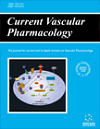
Full text loading...
We use cookies to track usage and preferences.I Understand

Traditionally, arterial atherosclerotic (AA) and venous thromboembolic (VTE) diseases have been separated into two independent entities. However, a body of evidence suggests the link between arterial and venous disease. In this narrative review, the relationship between these two vascular diseases is discussed. Different risk factors are common in both diseases, such as dyslipidaemia, metabolic syndrome, and thrombophilia. Etiopathogenetic mechanisms of both diseases are similar. Inflammation, as a basic pathogenetic mechanism of atherosclerotic disease, is also involved in the pathogenesis of VTE. Inflammation as a response to vessel wall injury promotes coagulation and inhibits endogenic fibrinolytic activity, which results in thromboembolic events in the arterial as well as in the venous system. A relationship has also been observed between preclinical or clinical atherosclerotic disease and VTE. These findings indicate that atherosclerosis may induce VTE or that common risk factors simultaneously stimulate the development of both diseases. The relationship between arterial and venous disease is also supported by the efficacy of some drugs (antiplatelets, anticoagulants, statins) in the prevention of both diseases.
In conclusion, arterial and venous diseases share similar pathophysiological mechanisms, often driven by common risk factors. This overlap suggests that a unified approach to prevention and treatment may be beneficial for both conditions, potentially improving patient outcomes by addressing the underlying shared pathways.

Article metrics loading...

Full text loading...
References


Data & Media loading...